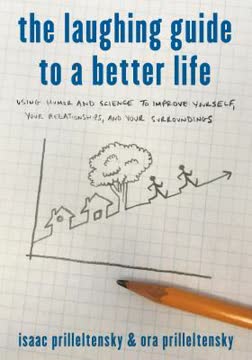Key Takeaways
1. Master the I CAN Model for Personal Growth
I CAN stands for interactions, context, awareness, and next steps.
Interactions are crucial for health and happiness. Good relationships can be our best allies, while toxic ones can be detrimental. To improve interactions, focus on connecting with others and communicating effectively.
Context refers to the people, places, and things that influence our behavior. To leverage context:
- Read cues in your environment
- Change cues to support positive habits
- Create an environment that encourages desired behaviors
Awareness involves knowing yourself and understanding the issues you face. This self-knowledge helps in setting meaningful goals and overcoming challenges.
Next steps are about planning and taking action. Always have a plan for strengthening change, maintaining gains, and continuing to thrive.
2. Cultivate Self-Awareness and Knowledge
Knowing yourself requires a bit of detective work.
Self-reflection is key to personal growth. Take time to:
- Identify your core values and principles
- Assess if your behaviors align with these values
- Recognize your strengths and weaknesses
- Understand your emotional patterns and triggers
Issue awareness is equally important. When facing a challenge:
- Research the topic thoroughly
- Consult credible sources and experts
- Be open to information that challenges your beliefs
- Apply critical thinking to separate facts from myths
By combining self-awareness with knowledge about the issues you face, you can make informed decisions and take effective action towards your goals.
3. Foster Positive Relationships Through Connection and Communication
Good relationships bolster health and happiness, while toxic ones and lack of support have a corrosive impact.
Connection is vital for well-being. To strengthen connections:
- Invest time in relationships that matter
- Show empathy and support to others
- Cultivate a sense of belonging in your community
- Practice active listening and genuine interest in others
Effective communication enhances relationships. Key skills include:
- Expressing thoughts and feelings clearly
- Listening without judgment
- Providing constructive feedback
- Resolving conflicts respectfully
Remember, relationships are built on positive interactions over time. Strive for a high ratio of positive to negative exchanges, especially in close relationships.
4. Harness the Power of Environmental Cues
Our environment is full of cues like these.
Recognize cues that influence your behavior:
- Blatant cues: Obvious triggers like food or alcohol
- Subtle cues: Less noticeable influences like peer pressure or stereotypes
Change your environment to support your goals:
- Remove negative cues (e.g., junk food from your pantry)
- Add positive cues (e.g., workout clothes by your bed)
- Create defaults that make good choices easier (e.g., automatic savings)
By actively managing your environment, you can make desired behaviors more likely and reduce the willpower needed for positive change.
5. Develop a GREASE Plan for Effective Change
GREASE is a plan of action consisting of six simple principles: gradual, reinforced, easy, alternatives, supported, and educated.
Gradual: Start with small, manageable steps to avoid overwhelming yourself.
Reinforced: Use rewards and positive self-talk to reinforce progress.
Easy: Simplify the process by removing obstacles and creating supportive environments.
Alternatives: Find substitutes for problematic behaviors or habits.
Supported: Seek help from friends, family, or professionals.
Educated: Learn about the issue you're tackling to make informed decisions.
By following these principles, you can create a comprehensive plan that addresses various aspects of change, increasing your chances of success.
6. Navigate the Stages of Change
The five options correspond to five stages of change in the Transtheoretical Model (TTM) of change developed by Prochaska, Norcross, and DiClemente: Precontemplation, contemplation, preparation, action, and maintenance.
Understanding your current stage of change helps in selecting appropriate strategies:
- Precontemplation: Raise awareness about the issue
- Contemplation: Evaluate pros and cons of change
- Preparation: Develop a concrete plan
- Action: Implement the plan and monitor progress
- Maintenance: Reinforce new habits and prevent relapse
Remember that change is rarely linear. Be prepared for setbacks and adjust your approach as needed. Use "if-then" plans to anticipate and overcome potential obstacles.
7. Embrace Humor as a Tool for Self-Improvement
The motto of this book is smarter through laughter. If you can laugh about it, you can probably change it.
Humor as perspective: Laughter can help you:
- Gain distance from your problems
- See situations in a new light
- Reduce stress and anxiety
- Build resilience in the face of challenges
Self-deprecating humor: Learning to laugh at yourself can:
- Increase self-awareness
- Promote humility
- Make you more approachable to others
Use humor as a tool for self-reflection and growth, but remember to balance it with seriousness when addressing important issues. Laughter can make the journey of self-improvement more enjoyable and sustainable.
Last updated:
Review Summary
The laughing guide to a better life receives mixed reviews with an overall rating of 3.25 out of 5 based on 4 reviews. One reader found the book confusing due to its misleading title, which they felt provided no value in relation to the book's content. However, they acknowledged that the book offers valuable life advice. The reviewer suggested that a more accurate title would have been beneficial. Despite the title issue, the book seems to contain useful insights for readers seeking guidance on improving their lives.
Download PDF
Download EPUB
.epub digital book format is ideal for reading ebooks on phones, tablets, and e-readers.




